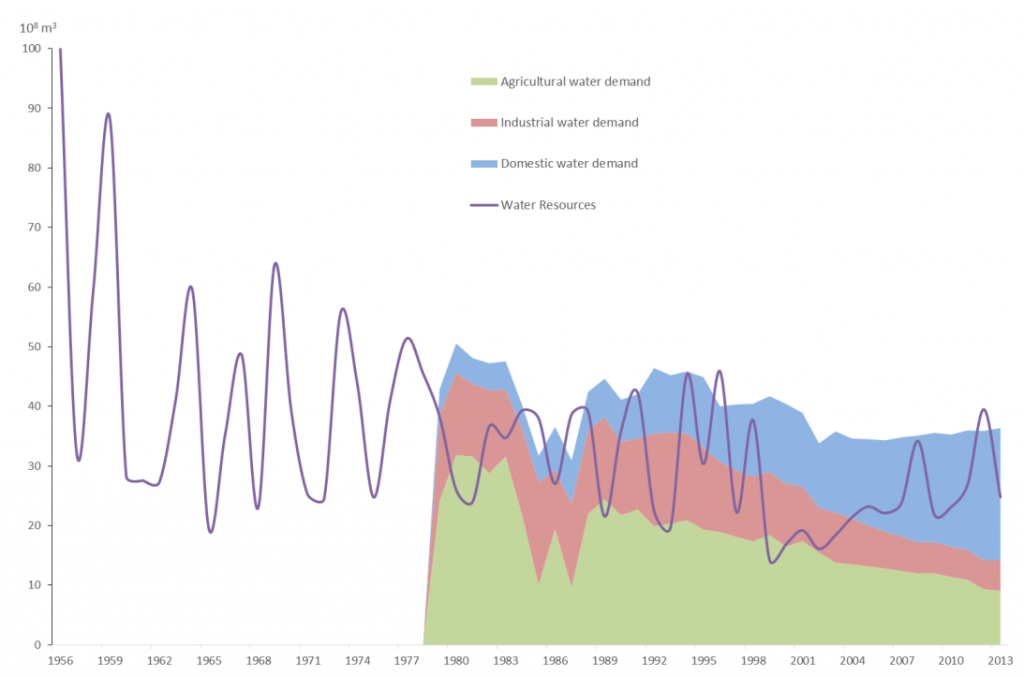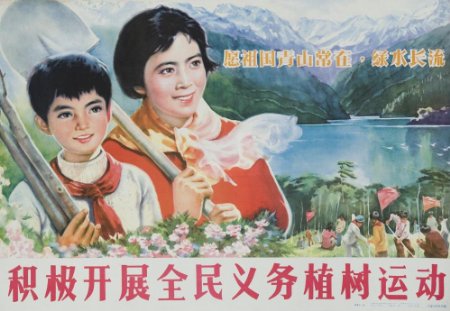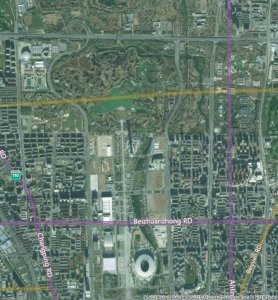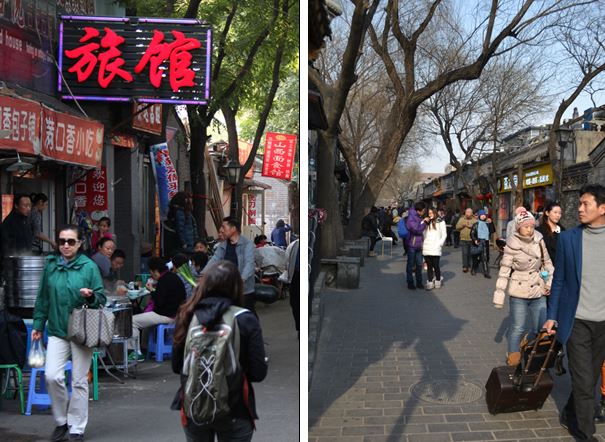In contemporary China, rapid population growth together with national modernisation and industrialisation have combined to create ongoing and acute challenges to water services provision in the country’s burgeoning cities. In early 2015 I travelled to China’s capital, Beijing, to meet scholars researching aspects of water security in this fascinating city. In that short visit I learned a great deal about water services provision in Beijing; some things that are pretty universal (e.g. the need to find new policies and technologies to discipline domestic and industrial consumption), and some things that are relatively unique (the importance of sporting mega-events like the Olympics in driving infrastructural development, and the enduring challenges of service provision in Beijing’s old inner city neighbourhoods).
First, a little history…
A system of underground water supply and sewerage pipes, eventually extending some 195 miles (315km), was in operation as early as the 15th century, but it apparently collapsed after the Ming Dynasty ended in 1644. The modern history of Beijing’s piped water supply began in the late Qing Dynasty (1644-1912) when several springs in the northwest of the city were tapped by means of an aqueduct that conveyed water for the city moat (around the Forbidden City complex) and for three lakes near the Imperial Palaces. The moat around the city walls became an important means of water distribution for the municipality. After a 1908 fire at the Imperial Palace, the Empress Dowager Cixi ordered the construction of a water processing plant to create a more effective way to fight the fires that were increasingly plaguing Beijing, then constructed largely of wood. A water purification and pumping station, called the Jingshi Tap Water Co., was set up which used a steam engine to circulate water around the perimeter of the imperial city’s walls, the moat thus becoming one of the first water management installations in the capital.

Water Consumption of Beijing, 1979-2013 (Beijing Water Conservancy, 2000)
Second, a little geography…
It is important to recognise that Beijing is one of the most water short cities in the world. Its annual incident precipitation of 550mm needs to be shared out amongst more than 20 million people and a great many industrial and commercial enterprises. This makes Beijing relatively more water short than Phoenix, Arizona (which shares out 300mm amongst 4.5 million people). Until recently deficits in surface water supply have been made up for by overdraught of groundwater resources. Figure 1 shows the chronic and growing deficit in water supply compared with demand. Water authorities in the city have sought to alleviate mounting crisis through:
• Prohibiting agricultural use of water from the city’s main reservoirs, located north of the city.
• Raising water tariffs for domestic and industrial water users.
• Significantly increasing the amount of sewage water ‘reclaimed’ for further use.
• Supporting completion of the ‘South-North Water Transfer Scheme’.

Although the main city reservoirs, Guanting and Miyun, are now explicitly reserved for the capital, the amount of water available from them is shrinking and what does come is highly polluted, particularly by upstream agricultural and industrial activities. These and other schemes built during the Great Leap Forward and the Cultural Revolution reflected a faith in the revolutionary power of big engineering projects to solve water problems, with one propaganda poster from the period exhorting citizens to “Go Plant Trees! Green Mountains and Healthy Water Forever”. Chairman Mao himself declared that one solution to the capital’s chronic water shortage was to “borrow a little water from southern districts”, an idea that eventually found realisation in the completion of the ‘South-North Water Transfer Scheme’. The ‘little water’ to be ‘borrowed’ from the south now amounts to more than 1 billion cubic metres per year – more than the entire annual consumption of London!
Third, a dash of government policy…
Water conservation has been rigorously promoted among all sectors of Beijing society since the 1980s. The 1981 Interim Regulation on Groundwater Resources Management in Beijing, mandated implementation of water saving technologies such as low volume toilets and economic measures such as higher water prices. Water-saving devices have been promoted by government regulations, and their coverage in public institutions and households has reached 100% and 95% respectively by 2014. Water fees have been collected since the 1960s but they remained unchanged until 1983, after which they were adjusted more frequently, precisely in order to reduce consumption. There were no less than five domestic water tariff increases the 1990s and six in the first decade of the 21st century. In 2014, tiered water pricing was been introduced in Beijing for household users, making increasing consumption disproportionately more expensive.

Lake’ and wetland conservation feature
Wastewater reclamation has also been actively pursued, particularly after the year 2000. Beijing has made substantial progress in the use of reclaimed water for non-potable uses. In 2001 a new regulation mandated the construction of reclamation facilities for residential areas exceeding 50,000 square metres and the Beijing Olympics proved a useful driver of water reclamation. Figure 3 shows the ‘Dragon Lake’, an artificial channel, lake and wetland system placed at the heart of the main 2008 Olympics site. The head of the dragon is at the top of the image with the constructed wetland, now a biodiversity hotspot, in the upper left and the main body of the ‘dragon’ running down the middle towards the ‘bird’s nest’ stadium at the bottom. When I visited the site on a clear but cold January morning, there were more than a dozen bird-watchers out, all declaring that the ‘Dragon Lake’ was an excellent place to see birds, including some rare species.

Another challenge for Beijing’s urban authorities attends on the complexities of providing modern standards of water services in the older hutong districts in the central city. Up until the 1980s successive urban governments sought to raze these old 19th century neighbourhoods, where houses are small and often not built with internal toilets, requiring residents to use one of the many nearby public conveniences. In the last two decades however Beijinger’s have rediscovered, and redeveloped, remaining hutongs as shopping and nightlife districts, though the challenges of water services supply remain.
Finally, a few concluding thoughts…
Beijing’s ‘hydrosocial geography’ is a mixture of the universal and the particular. On the one hand pressures of declining absolute resource availability and rising population, and the need to better serve the natural environment as well as people are pressures one sees everywhere. On the other hand, it is abundantly clear that Beijing’s water managers have found ways of dealing with these pressures that are uniquely Chinese. I look forward to visiting again and learning more!
